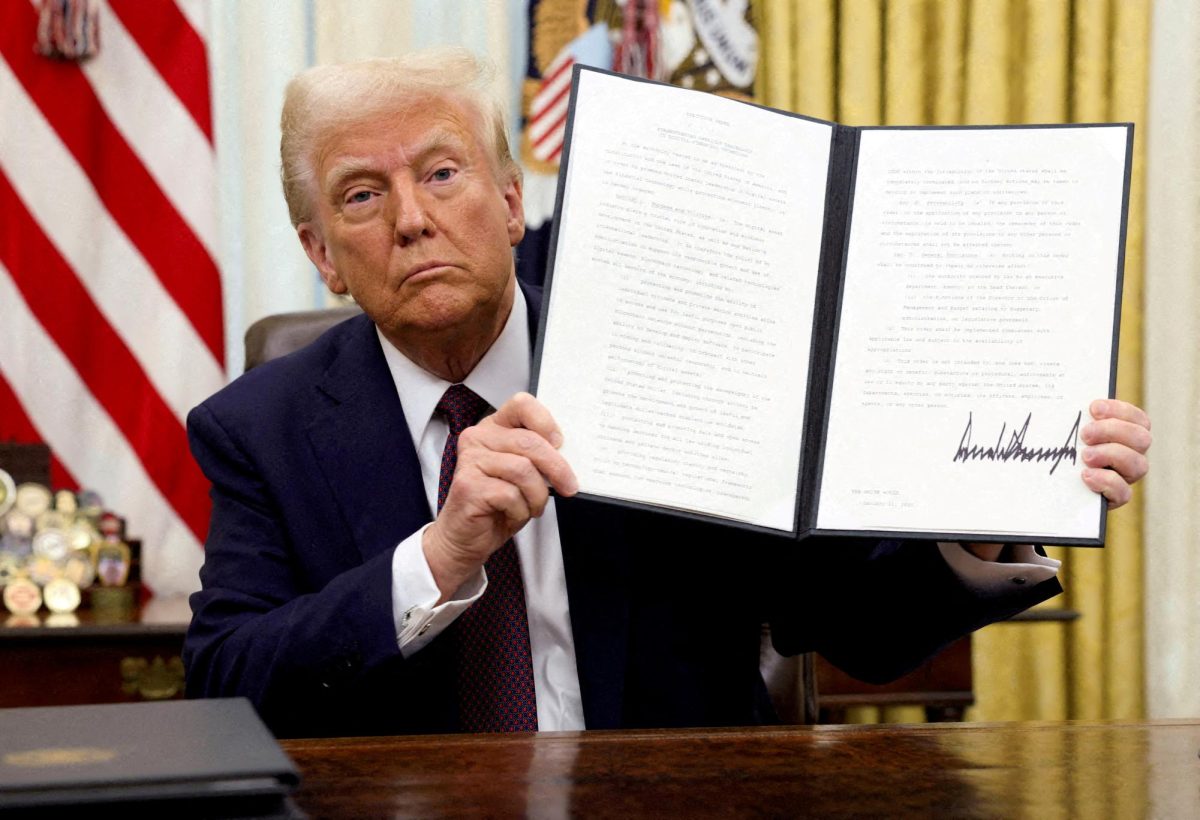To start off, it’s important to know what the stock market is and how it works. The stock market is a place where investors buy and sell ownership stakes (shares) of publicly owned companies (Investopedia). This benefits companies because they use the sales of their stocks as capital, and it benefits shareholders because stocks buy partial ownership of companies and earn money as they increase in value.
Another thing that you need to know of is the Standards and Poors (S&P) 500. The S&P 500 is a stock market index that tracks the stock performance of the 500 largest publicly traded companies in the US (Investopedia). This scale is heavily regarded as one of the most accurate gauges of America’s equity index and entire stock market, and while there are multiple contenders for scales (Dow Jones Industrial Average, Nasdaq Composite, Russel 2000), they all exhibit the same information — the stock market plummeted as a result of Trump’s imposed reciprocal tariffs (Reuters).
Recently the stock market faced a huge decline in stock performance, which was reflected through the substantial 19% decrease in the S&P 500 from its peak — dropping 10.72% purely within five days (Reuters). President Trump issued a pause on his “reciprocal tariffs” on Wednesday, April 9th (besides China), but kept a universal 10% tariff on all imports (BBC).
Tariffs, in simple terms, are a tax or an extra fee that is charged when a good is imported from another country. Tariffs inherently affect the entire economy. They affect the price of groceries, automobiles, leather, clothing and more, which has a ripple effect on the cost of living for consumers. They can provide an increase of income for the government and promote local and domestic businesses, but they also increase consumer prices. If a company that imports their goods to the US has to pay a 10% fee to bring their goods in, they will very likely raise their prices to compensate for the loss they experience by paying extra money to sell their product in the US.
The recent stock market decline was a result of the increased tariff tax rates President Trump imposed on about 60 countries. This includes China, the European Union, Canada, Vietnam, Japan and other large importers of the US (BBC). President Trump’s imposition of worldwide tariffs provoked responses from multiple countries, who are subsequently working to retaliate. A notable retaliation is China’s 84% tariff on US imported goods in response to Trump’s 104% tariff on Chinese imports, which went into effect on Wednesday, April 9. Retaliations from countries mean reciprocal tariffs targeted towards the US, volatility in the stock market, trade wars, an overall downturn in the US economy and turmoil within the US’s role in globalism. With all the economic uncertainty within the market and the topic of tariffs, many Americans have turned their attention to personal finances — one of which is the 529 plan.
There are two types of 529 plans: education savings plans and prepaid tuition plans, with education savings plans being the most common option. The investor (likely your parent/guardian) of the 529 plan puts money into an investment account, which will usually take the form of mutual funds. Investors are able to withdraw funds from their accounts without tax as long as they are used for qualified education expenses. The goal of a 529 plan is to grow an individual’s money over time by investing it in the stock market and other assets. Since it’s invested, the value of a 529 plan can go up or down depending on how the stock market performs (Nysaves.org).
A mutual fund is a large pool of money collected from lots of investors, which is then used by a fund manager to invest in stocks, bonds, or other investments. If the stocks go up, individuals can benefit from that and have a professional to make decisions for them and the other contributors.
While 529 accounts are partially made up of stocks, many choose to be conservative with their investments and use asset allocation. Asset Allocation is how your money is spread across different investments (stocks, bonds, cash), and it usually becomes more conservative as the beneficiary gets closer to college age (Investopedia).
So why is your 529 plan affected by President Trump’s tariffs? Tariffs can affect 529 plans through the stock market. When tariffs are imposed, they can lead to higher costs for businesses and trade tensions, which might hurt corporate profits and slow economic growth. If the stock market reacts negatively, the value of 529 plan investments (especially those heavily invested in stocks) could temporarily drop, which is bad news for beneficiaries that are attending college soon (CNBC).
The unpredictable nature of the stock market can create hesitancy around investing, especially when it comes to long-term goals like education. While a market downturn may seem like a setback, it can actually present an opportunity. When stock prices drop, investors can purchase more shares at a lower cost. This makes it an ideal time to contribute to a 529 plan for parents with younger children, allowing those investments ample time to recover and grow before the funds are needed for college expenses. Taking advantage of these lower prices with a long-term perspective can enhance the overall growth potential of a 529 account.










